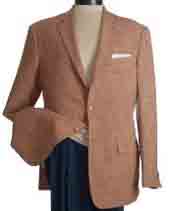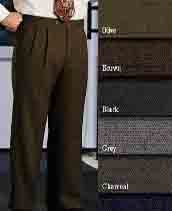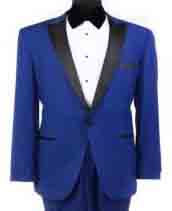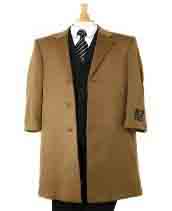All about Men's Neckties
![]() Neckties are most important piece in formal dressing. Necktie is a narrow and lengthy fabric band hanging loosely from the neck worn by men under the collar and tied around the neck.
Neckties are most important piece in formal dressing. Necktie is a narrow and lengthy fabric band hanging loosely from the neck worn by men under the collar and tied around the neck.
The necktie is mostly made out of cloth materials like silk, polyester, cotton, wool, and linen. The main purpose of wearing a necktie is to hide the buttons on the shirt. There are variant forms of Neckties like Cravats, Bows, Butterflies, Bandannas, Bolos or Bootlaces, Jabots, Ascots, Anti-Neckties or Turtle Neckties, and Designer Neckties.
History of Neckties
They became very famous in the 20th Century, the paintings and status of Egypt and China shows men wearing rectangular neckwear. The famous terracotta statues of army made in 210 B.C. during the reign of China's first emperor, Shih Huang Ti, have neckwear around them. In 106 B.C. Neckties was cloth worn around the neck and knotted like bandannas by Roman Military.
Cravats
They were seen in European country the first time during the reign the French King Louis XIV. The king noticed the colorful silk worn by the Croatian army. They are known as 'Cravat' made of lace, muslin, or silk, trimmed with embroidery was favored by the king. It is believed that the word 'Croat' could be mispronounced as the French word 'cravat.' Cotton cravats were worn by poor people. The cravat spread to England in 1660 with the return of King Charles II to England after a nine years exile. Lace was commonly used by both men and women. The materials used by the people besides lace were plaid scarves, ribbon, embroidered linen, and ordinary cotton. The soldiers used to wear thick neckwear to protect their neck from the swords.
Bandannas
During the 17th Century, Bandannas, a piece of cloth worn around neck, was commonly used in India. British who came for trade started importing bandannas. The colors were vivid including hot colors like red, orange, and yellow and cool colors like blue, green, white, black, and pink. There bandanas had motifs of flower and birds.
In 19th Century, George Bryan "Beau" Brummell, a young prizefighter believed that a man should be dressed in simple perfect way and did not prefer frills. He wore a blue silk bandana covered with white spots. The simplicity of the dress with the neckwear became popular among English working class. The British sailors wore white and blue uniform with silk or cotton bandanna or scarf. Bandanna was famous in America too. The cowboys used to wear red or blue bandanna to protect their face from dust.
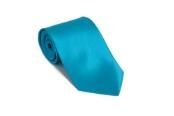
Four-in-Hand
The first school Neckties was worn by students belonging to a rowing club at Exeter College, Oxford University. They ordered that should be matched with the colors of their hatbands. In 1850s, for the first time four-in-hand style was used. These types had enormous appeal among the middle class. In 1880s, the British military decide to stop using vivid colors and adopt more restrained color.
Bow Neckties
The French, who used wear lace cravat in 17th Century, started wearing bow Neckties. The white one was considered formal, whereas other colors were worn in different occasions.
A Neckties Singing Dixie
Top hats The Irish immigrant to America wore green or red ones. In America, however, because of hot climate, people stopped using materials like lace and silk scarves.
Ascot Neckties
This is a narrow patterned neckband with wide wings made of pale gray silk. The wings were held firmly with a pin. The neckwear got its name from Royal Ascot race meeting at Ascot Racecourse. It was earlier worn by upper class European in 1880s as a formal wear. Ascot was also popular in United States.
Bola Neckties or Bootlace Neckties
The bola or bolo Neckties is a piece of cord worn around the neck and clasped together with an ornamental piece. In European countries, it is known as "Bootlace Neckties." The first bola one was worn by Vic Cedarstaff in Arizona and was patented. It became official in Arizona in 1971. It became popular in 1950s with Teddy Boys who wore them with drape suits.
Turtle Neckties or the Anti-Neckties
The Turtle or the anti-Neckties were worn by British writer Noel Coward in 1920s. This set a new trend. The French wore black turtlenecks in 1950s.
Lord Byron
The famous poet, Lord Byron did not like to wear neck cloth. There were different types of Neckties named after him. In 1820s, the Byron was a big floppy bow in black or white. In 1840s, this changed to string or narrow ribbon which changed to large readymade bow in 1860s.
Designer Neckties
In 1920s, a Paris fashion designer, Jean Patou, designed a designer Neckties which became famous with women. It was designed drawing inspiration from art movements like Cubism and Art Deco. The designer Neckties became very popular in 1960s.
Different types of Knots
There are many different ways to wear Neckties. The style in which a Necktie is worn is called knots. The knots include four-in-hand knot, Pratt knot also know as Shelby knot, half-Windsor knot, and Windsor knot.



